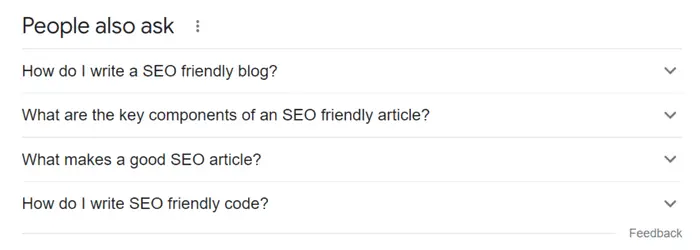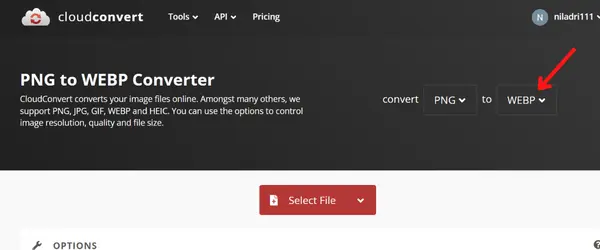Table of Contents
Introduction:
Bridging the gap between optimizing your article and creating SEO-friendly content can be difficult. Naturally, SEO-friendly content can help your website generate targeted traffic. You’ll need an article that’s both SEO optimized and user-friendly. In this article, we will go over the top 20 tips to write an SEO-friendly article for your website.
What Exactly Is SEO Writing?
SEO writing refers to the process of creating content with the objective of appearing at the top page of search engine results.
You can give Google so much more information about your article by following SEO best practices. These details will be used by Google to determine whether the page is relevant to a user’s search query. If the page is important and valuable to readers, Google will most likely rank it.
20 Tips to write an SEO friendly article:
1. Do proper keyword research:
Proper research is the first and most important part to write an SEO-friendly article. Without an analysis and proper keyword research, it is not possible to rank your website on search results.
A few things really matter if you want to bring your content to the search results top: The target keyword, length of the article, article type, research on existing ranked articles, the questions asked by the peoples on search engines, and a few more factors.
You can start with an amazing SEO tool like SEMrush. SEMrush provides a free trial that will assist you in effectively analyzing the topic and optimize the keywords. It will assist you in determining which keywords to target.
Choosing the correct keywords will assist you in dominating search queries and satisfying your right demographic.
Incorrect search terms will be a waste of your time and resources. Discover the visitor intent behind the search terms you want to use.
Long-tail keywords are essential for a new website to rank at the top of search results. Even if there is a low search volume, there is a good chance of appearing in search results. People use long-tail keywords to find more relevant info on a particular subject.
Other than SEMrush, the best keyword discovery tools are SE Ranking keyword suggestion tool, KWFinder, Answer the public, and Long Tail Pro.
Using Quora, you can make possible variations of your search terms. Users are using this tool to talk about business topics.

Utilize Google Related Searches to discover much about the clients and their intentions. Look for discussion Wikipedia pages. It also has a high search engine ranking.

Investigate your closest competitors and determine which search terms are generating a significant amount of high-quality traffic.
2. Make a unique and valuable article.
Articles that are valuable and unique do not always imply that they have never been said before. It appears to imply that your content cannot be a carbon copy of something found elsewhere online.
Google is extremely proficient at detecting duplicate articles, and those articles that contain duplicate content will never rank. Your article must resolve people’s search queries.
3. Make content that is better compared to that of your competitors:
Review and compare your articles with others in the following areas to write an SEO-friendly article:
- Your content’s length is important. If your article is brief, you should add more details before proceeding.
- In comparison to your competitors, you must have a large number of images and videos.
- Finally, quality is essential. Only publish detailed and high-quality content.
4. Look at the “people also ask” section:
When you find the search term in Google, a segment named “people also asks” will appear. Choose the queries that fit exactly with the topic of your post and write to them in your blog. Further, if you click on any of the queries, Google will add more. This is a clever technique for ensuring that your SEO-optimized content responds to searches.

5. Follow a proper structure:
Maintain a good structure to write an SEO-friendly article. Determine the major point of the article. Divide it into sections to generate content faster. Once you’ve structured the article, you’ll be able to work on every section independently without having to stop to organize your ideas.
An intro, body, and wrap-up should be included with every article. Simply split the body into sections and write a unique article that reflects your individual style and relevant to your visitors.
The conclusion part must be a complete wrap-up of the entire post. Finish the article with a proper CTA that encourages readers to take a specific action.
6. Eye catchy headlines do matter:
Headlines have a significant impact on website SEO. Concise and attractive headlines can make users understand the topic of the article and its benefits from it.
Optimize the headlines for SEO with a few simple tips:
- Include the main keyword at the start of the title.
- As Google shows only the first 60 characters, restrict the article to 60 characters.
- Include a number, a power word, and a positive sentiment if possible. Use words like best, amazing, free, surprising, etc.
7. H1, H2, and H3 tags:
Creating captivating subtitles will improve the article’s clarity. It is essential to use subtitles sequentially. The page’s headline must be an h1 tag and include the focus keyword. The body will be labeled with an h2 tag, while subheadings will be marked with an h3. If possible include the focus keywords in the h2 and h3 tags also.
8. Meta description matters:
Meta description plays a big role to write an SEO-friendly article. This is a synopsis of the article that Google shows just beneath the headline in search results. It is necessary to make it appealing and relevant in a way to motivate readers to click on the article.
It must include a description of your article as well as your focus keyword. The meta description length must be between 150 and 160 characters in length. Include your focus keyword and use it spontaneously.

9. Content length:
Do you want to write an SEO-friendly article? Write long blog posts. Longer posts are more likely to appear higher in search results. The optimum word count is at about 2000. Although, consistently posting 2000 words must not be your main objective. Most importantly, you should provide your audiences with the greatest beneficial and valuable content possible.
10. Do not include STOP words in the permalink:
Eliminate STOP words like “a” “an” “the” “we” “about” “am”, etc from the permalink, because these words are ignored by Google.
For example, if we write an article titled “How to Write a Blog Article Fast?” and you used the permalink “write-a-blog-article-fast,” change it to “write-blog-article-fast”.
11. Keep your content up to date.
Though if you produce original and high-converting posts, you must regularly publish blog articles and keep updating your website’s content. If you don’t publish or update content on a frequent basis, Google will not accept your blog as a valuable one.
12. The search intent must be matched:
Search intent refers to a visitor’s objective when searching for something. Someone who searches for the “best SEO tool to rank top on Google” is interested in the best SEO tools available on the internet. Google can detect the customer’s search intent and display relevant articles in the “People also ask” section.
Google assesses search intent in order to motivate content creators to write blog post that effectively clarifies users’ queries. Search intent is divided into four types: Informational, Navigational, Commercial, and Transactional.
Informational keywords include “how”, “what”, “checklist”, “tutorial”, and similar terms. Navigational keywords improve “about us,” “homepage,” and so on. The commercial keywords are “best”, “review”, “cheapest”, etc. “Buy,” “purchase,” and “deals” are examples of Transactional keywords.
13. Interlinking is important:
To write an SEO-friendly article, internal linking matters. If you’ve posted previously similar content, be sure to include internal links to those articles in your new post. It will boost the authority of your new article and existing articles. Linking to related posts is useful to your viewer because they may be interested in reading such posts. It makes it easier for your visitors to jump into some other related posts. Of course, this activity will lower your website’s bounce rate, resulting in a higher ranking in search results.
Technical SEO is also an important ranking factor. Click here to know the detailed technical checklist now! See, how I made an internal link here with some of my other blog articles.
14. Use related keywords instead of keyword stuffing:
Forcing keywords into your article makes it less appealing and may harm your ranking. So, naturally, use related and similar keywords instead of the focus keyword. Google does not want the focus keywords to appear in every paragraph. Google can recognize synonyms and related keywords to better understand the topic.
15. Include transition keywords:
Use words like “in addition,” “however,” “similarly,” “for example,” “first of all,” “secondly,” and “finally” to convey a clear message to your viewers. When readers see words like ‘sum up’ or ‘in brief,’ they know that an overview will apply. Thus, transition words are necessary for proper structuring.
16. Include an author box:
When writing an article, you must include the author’s information. Displaying the author’s information strengthens the reliability of a page. To provide author information, a really efficient way is to place an author box just below your blog posts.
17. Make use of optimized images:
Images benefit the user by making the article less confusing and more readable. Images are also beneficial to search results because they provide added information on your topic.
The following are some best practices for optimized images:
- Use copyright-free images only. Visit websites pexels, pixabay, Unspalsh, etc to find out free and copyright-free images.
- Optimize the size of your images before using them. Compress the PNG images first, and convert them into webp format. Use cloudeconvert.com to convert your images into webp format.
- Use relevant image file names, and add ALT text to describe the image,

18. Use short paragraphs:
It is usually advised to keep paragraphs short. This makes the article more understandable for visitors. You can line up your text using key points. This makes it a lot easier and makes your information more visually appealing.
19. Make use of schema markup:
Schema markup will help search engines determine how important your information is. It classifies your blog posts and says search engines how each paragraph indicates.

20. Read it again before you publish it:
Do not publish anything that contains grammatical errors, less meaningful lines of text, or primarily illogical sentences. As a result, always read your article at least once before publishing it. Change anything that appears to be unnatural.
Conclusion:
I hope you now understand how to write an SEO-friendly article. I am pretty sure, if you follow such SEO strategy writing tips, you will be able to attract the right kind of traffic to your blog article.
Finally, the days are long gone when simple SEO tricks work and your article comes in the top of google search results. These days, high-quality content rules the internet. Furthermore, quality articles result in more likes, and shares, and repeat your viewers to come back again. So, the most important thing is to simply write quality content.
Related articles:
- FatJoe Review – SEO and Marketing Services on Demand to Grow Your Website.
- Technical SEO audit checklist 2023 for Beginners.
- SE Ranking Review – Perfect Keyword Rank Tracking.
- Nightwatch SEO Review – Track Your Search Engine Rankings.
- 20 SEO Hack to Increase Organic Traffic.
- How to Increase the Domain Authority of Your Website?
- WriterZen Review – Get high-quality content metrics.
- SEO in digital marketing – The process to improve the visibility of your website.
